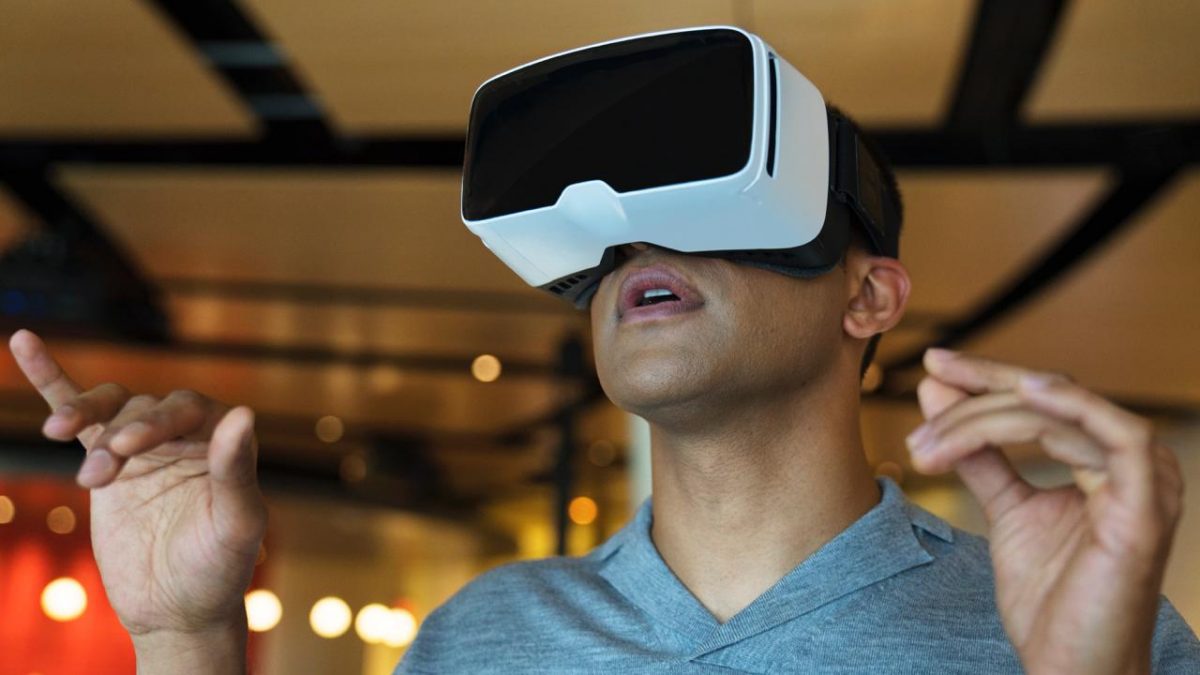If you’re considering mental therapy, your first thought may not be to reach for a virtual reality (VR) headset. Though most people associate VR with games and entertainment, the technology is gaining popularity as an effective way to treat anxiety and post-traumatic stress disorder (PTSD).
Studies on the impact of VR on mental health therapy have existed for decades. The improved design and affordability of VR headsets coupled with refined computer-generated imagery make the experience more realistic for patients.
A growing prevalence of consumer headsets has also made patients more receptive to using VR. Related innovations such as 5G wireless networks are also expanding, and will be key to the future mainstream adoption of VR. At Verizon’s 5G lab, developers are using these advances to work on other healthcare applications, like VR for physical therapy.
“We have the [right] equipment,” says Dr. Patrick Bordnick, a Tulane University professor who studies VR therapy for addiction. ”That was a huge breakthrough: getting something that works and is affordable.”
Recent studies estimate that one in five people lives with mental illness. But patients often don’t access adequate treatment because of location, finances or stigma. Researchers have found therapeutic VR easier for some patients to utilize and as effective as some traditional methods.
Exposure therapy – a form of treatment that confronts the patient with a trauma-inducing situation – is one of the most popular applications of VR. For example, a person with a phobia of crowds would go to crowded areas as part of their treatment.
VR’s immediacy, realism and immersive nature can simulate the troubling environment. This approach is especially useful in situations where the scenario isn’t easily accessible. Some anxiety disorders are provoked by specific locations and the ability to recreate them through VR is key. Geography is no longer an issue. Headset experiences have been used to treat fear of flying, heights, animals, and other phobias.
A practitioner often monitors the simulation to identify patterns and triggers. Isolating key moments in the simulation can help a patient relieve some of the anxiety associated with the environment.
It’s important the technology works seamlessly for both patient and therapist, Bordnick explains. “I think that’s one of the biggest stumbling blocks we’re at now, and we’re working on that [seamless technology] to make it part of what we do.”
New startup companies in the VR space are combining clinical research with cutting-edge technology to create VR kits and systems that can be used to treat mental illness. The Palo Alto startup Limbix alleviates trauma, anxiety and depression-related disorders with immersive virtual reality kits.
Dr. Sean Sullivan, clinical psychologist & Director of Psychology at Limbix, says creating a realistic VR experience can enhance the therapeutic experience and even replace some traditional methods.
‘‘In clinical practices, virtual reality is replacing the aspect of exposure therapy that we call imaginal exposure,” explains Sullivan. “So rather than asking your patient or client to close their eyes and imagine the feared stimuli, we’re able to put them right in that environment in a virtual reality world as opposed to asking them to use their imagination.”
Veterans also use VR for treatment of PTSD. “With post-traumatic stress, it’s challenging.” says Sullivan. “It depends on what the original stress-producing event was, but often it will be wartime. It’s the one [event] that has been tested the most in VR.”
Reliving those experiences is an important part of their treatment. For added realism, Limbix’s tech includes 360-degree panoramic real-world imagery to enhance the patient experience.
“We may need to go and film in the places where the patient had the original tragedy occur,” Sullivan says. “With something like PTSD you may need to approximate the actual events.”
Experts caveat that more awareness and development is needed to make VR a go-to option for mental health therapy. Dr. Sullivan agrees: “We need to approach where the experience is so good, the hardware is so comfortable and the software is so seamless, that it’s an appealing treatment.”
For additional resources, please visit the following:
For related media inquiries, please contact [email protected]
For more on the Fourth Industrial Revolution, please visit this page.About the author(s):
Saidat Giwa-Osagie is a London-based writer and startup founder who writes about innovation, technology and culture. Her writing has appeared in publications such as The Atlantic, Business Insider, GOOD and The Huffington Post.





